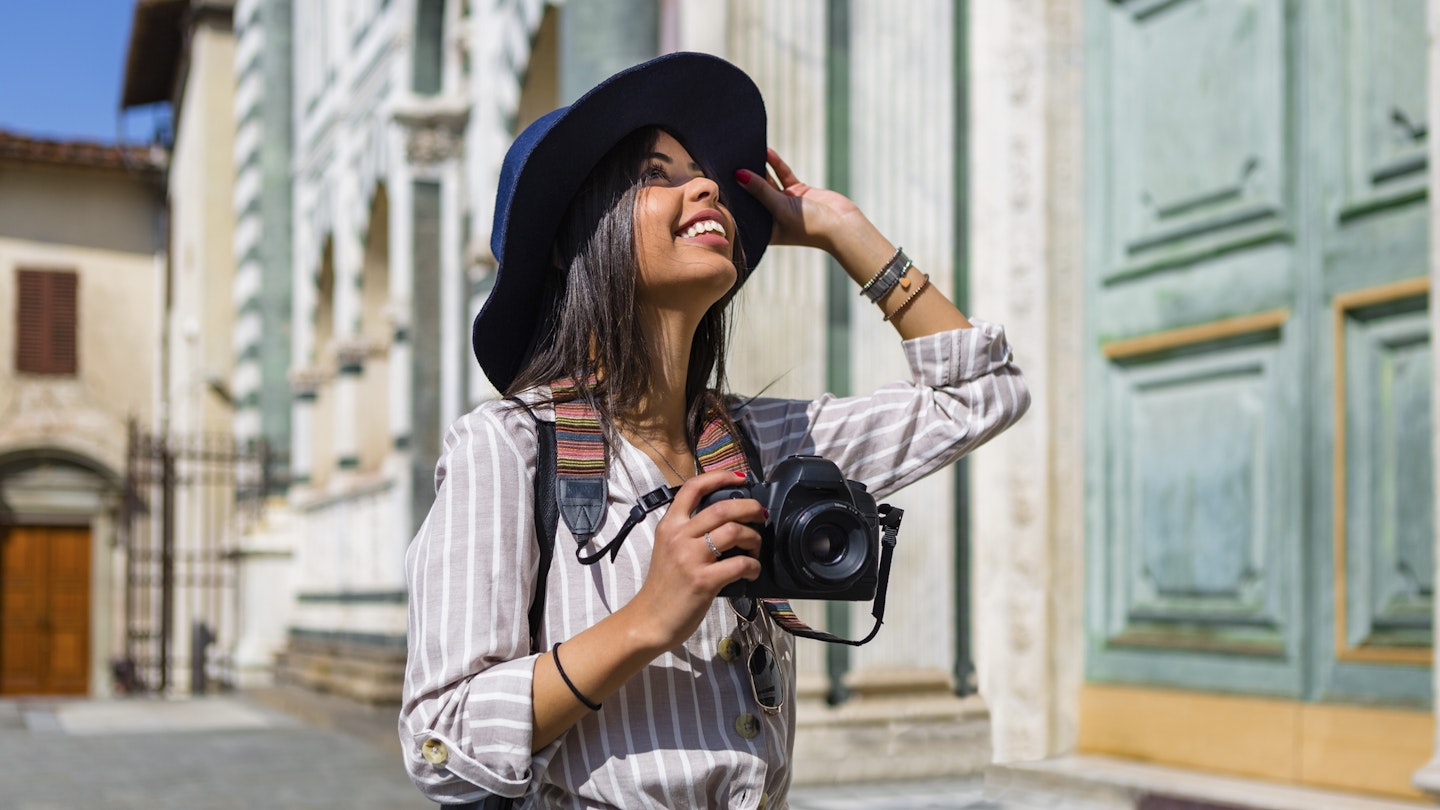Recognized as a World Heritage Site by UNESCO since 1982, the historic center of Florence boasts a vast collection of medieval and Renaissance art and architecture, despite its relatively compact size.
Originally bounded by its 14th-century city walls – partially removed during the 19th-century renovation – inner Florence is split in half by the Arno River, which runs under the historic Ponte Vecchio linking the two sides of the city.
Each neighborhood is typically centered around a square where markets, religious celebrations, and public events once took place in centuries past. While the tourism industry has transformed the city, bringing in millions of visitors each year and creating an increasingly international atmosphere, Florence’s districts have continued to maintain a distinct identity – each offering the chance to discover a different side of the city’s character.
Piazza del Duomo & Piazza della Signoria
Best for Art and Architecture
Most of Florence’s globally famous icons are concentrated in the city’s core – the area roughly stretching from Piazza del Duomo to Piazza della Signoria. Topped by Filippo Brunelleschi’s red-tiled dome, the impressive Cattedrale di Santa Maria del Fiore took over 140 years to build, standing as Florence’s main religious structure since the late 15th century.
The church’s intricately carved marble facade is a spectacle worth admiring from up close, before or after a visit to the Cathedral, Baptistery, and Giotto’s Bell Tower. It is possible to climb both the Duomo and the Bell Tower for a breathtaking view of the terracotta-covered Florentine rooftops – if you’re ready to tackle hundreds of narrow steps to the top.
Connecting Piazza del Duomo and Piazza della Signoria is the bustling Via dei Calzaiuoli, one of the city center’s busiest arteries. Short detours lead to Piazza della Repubblica and the contemporary art museum of Palazzo Strozzi. Once you reach Piazza della Signoria, you’ll find yourself under the shadow of Torre di Arnolfo, the clock tower marking the castle-like Palazzo Vecchio, the city’s center of power for the past seven centuries. This is where the Medici ruled over the city and commissioned projects such as the Uffizi Gallery, which houses Florence’s most important art collection. Step inside to admire works by Giotto, Botticelli, Raffaello, Caravaggio, Leonardo Da Vinci, Michelangelo, and many more.
Santa Maria Novella
Best for Transport Links
Branching out from the Santa Maria Novella railway station, this is Florence’s transport hub. With high-speed trains reaching Florence from most major Italian cities, this is often the first point of contact with the city. Hectic and diverse, the neighborhood is well connected to the major sights in the city – a ten-minute walk takes you directly to the Duomo and the central market.
The imposing Basilica di Santa Maria Novella – founded by Dominican monks in the 13th century – marks the heart of the neighborhood. Take some time to admire the symmetrical facade rich in symbolism designed by Leon Battista Alberti, before entering the church to see works by Giotto, Masaccio, and Ghirlandaio.
San Lorenzo & San Marco
Best for Market Atmosphere & Renaissance Icons
Easily reached from Florence’s railway station through Via Nazionale, lively San Lorenzo expands around the city’s largest market. Crowded, loud, and multicultural, this area is where you’ll find both mass-produced souvenirs and century-old enotecas standing side by side. The central market’s outdoor area is primarily dedicated to leather goods, while a 19th-century building houses two floors of stalls selling anything from fresh produce to traditional meals.
In this neighborhood, you can trace the history of the Medici family, who ruled over Florence for 300 years. The Palazzo Medici Riccardi was their first Florentine residence, while in the Cappelle Medicee museum you’ll find the monumental tombs of some of the most prominent members of the dynasty, including those contained in Michelangelo’s spectacular Sagrestia Nuova.
The San Marco neighborhood, stretching north of San Lorenzo, is Florence’s university hub, filled with lively student energy.
Santa Croce & Sant’Ambrogio
Best for Late Night Drinks
Piazza Santa Croce extends under the shadow of the majestic Basilica di Santa Croce, designed in the late 13th century. In June, the square transforms into a sand arena for the Calcio Storico tournament, where Florence’s historic districts compete in a brutal game that blends elements of soccer, rugby, and boxing.
At night, Santa Croce becomes a playground for thousands of exchange students, while locals tend to flock to the Sant’Ambrogio area, less than one kilometer from Santa Croce. Sant’Ambrogio is also home to Florence’s oldest market, perfect for uncovering local foods and vibrant daily life.
San Frediano & Santo Spirito
Best for Aperitivo, Crafts and Design
Known as the Oltrarno – meaning “on the other side of the Arno” – the neighborhoods of San Frediano and Santo Spirito are dotted with bars, vintage stores, ateliers, and restaurants. Starting from the post-war period, many artisans began moving their workshops to this part of the city, drawn to the area’s affordable rents. This historically working-class district retains a dedication to creativity and craftsmanship amidst visible gentrification.
Boboli, San Niccolò & San Miniato
Best for Gardens and City Views
Behind Palazzo Pitti, one can find the Boboli Gardens, one of the pioneering examples of Italian landscape architecture from the Renaissance. This picturesque setting greatly influenced later gardens across Europe. On the eastern side of the Oltrarno, the San Miniato Hill reaches Piazzale Michelangelo and the Basilica di San Miniato al Monte, both prime spots for breathtaking views of Florence.
To achieve his redevelopment objectives, architect Giuseppe Poggi modernized the city, adding large avenues and monumental squares that can now be seen throughout Florence.





